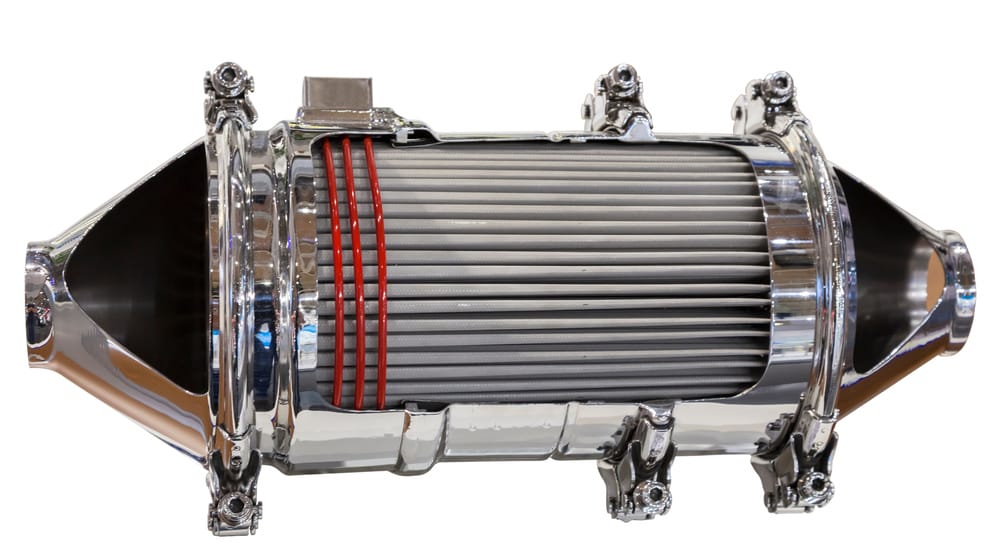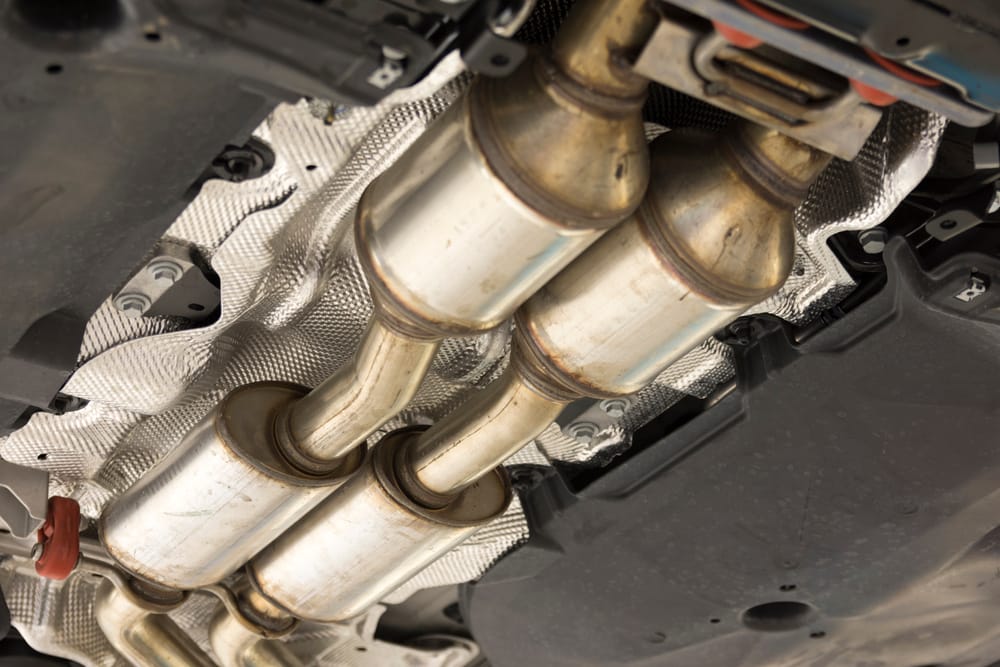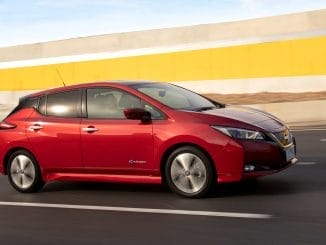A catalytic converter helps reduce carbon emissions from your car’s exhaust system. In addition, it’s also a crucial component for your car’s performance and efficiency. Hence, regularly checking it would be best.
If your car’s catalytic converter is damaged or old, it would be best to replace it immediately. You can ascertain this if you experience one or more of the below signs.
-
Reduced Engine Performance
Your vehicle’s engine performance relies on the efficient flow of exhaust fumes. The engine may not reach its peak power output if it’s restricted. One such reason that can limit the flow of exhaust is a clogged catalytic converter. Thus, emissions can’t flow through the converter as quickly as they should. As a result, you’ll get a slower response from the engine during acceleration.
In addition, you’ll also experience lower top speeds than before, even at higher engine revolutions per minute (RPM). A blocked catalytic converter can also create back pressure on the engine. Thus, your car’s engine can sometimes misfire. These symptoms gradually get worse. Therefore, repairing or replacing your catalytic converter as soon as possible would be best.
Clogging inside a catalytic converter can be due to carbon build-up in the honeycomb compartments. If this is the reason for the blockage, it can be easier to correct as the problem will be within the catalytic converter itself. However, it can sometimes melt internally.
To explain, the catalytic converter’s design and materials enable it to function at high temperatures. However, incomplete fuel combustion in the engine means unburned fuel reaches the catalytic converter. As a consequence, it can cause a temperature increase. Thus, your catalytic converter’s internals can melt. Replacing can help correct this problem. However, you may need a thorough diagnosis to ensure the new cat doesn’t break down sooner from other causes. Thus, your mechanic can check parts like oxygen sensors, spark plugs, and engine timing aren’t faulty.
-
Decreased Fuel Efficiency
As with engine performance, a bad catalytic converter can also result in poor fuel economy. Blocked cat reduces the flow of exhaust emissions. Thus, your car’s engine compensates for this by burning more fuel to attain desired speed or power. As a result, you’ll experience increased fuel consumption.
It’s vital to note that not every increase in fuel consumption is due to a bad catalytic converter. Thus, checking other fuel-related engine parts would be best.
-
Stalling Or Ignition Problems
A clogged catalytic converter can reduce adequate exhaust emissions. For this reason, the fumes can build up and choke the engine. As a result, your car can occasionally stall. Additionally, you may also experience problems when starting your vehicle.
A stalling car can especially be dangerous if you’re on the highway. Therefore, taking your vehicle to the auto shop for proper diagnosis and catalytic converter replacement would be best, as it can quickly become a safety hazard to yourself and other road users.
-
Rattling Noises Underneath
Sometimes, the honeycomb compartment inside the catalytic converter can break apart. Damage to the cat or excessive heat can cause this. Whatever the cause, the breakage can produce rattling noises when driving. You may hear these sounds when the car is idling too. However, the noise might be loudest when starting it. Thus, listen out for rattling sounds underneath your vehicle when starting or revving the engine.
When the honeycomb materials break apart, they can dislodge and block the exhaust system. As a result, your car may stall. Therefore, if you experience rattling sounds, it might be time to replace your catalytic converter.
-
The Check Engine Light Is On
The engine and other lights come on briefly on your dashboard during ignition. These lights disappear after a few seconds. But, if there’s an engine and exhaust system problem, the check engine light will stay on. One reason for this light is a faulty catalytic converter.
By design, modern vehicles contain oxygen sensors connecting to the catalytic converter. These sensors monitor exhaust emissions. If they detect improper catalysis, it sends an error message in the form of the check engine light. Various other reasons can cause this. Therefore, a proper diagnosis is necessary.
Naturally, most auto shops would have a diagnostic scan tool to help detect the problem via fault codes. Once you verify the problem, changing your catalytic converter would be best.
-
The Smell Of Rotten Eggs
A catalytic converter’s vital function is to convert exhaust fumes to less harmful emissions. However, if it’s faulty, some of the compounds found in fuel can pass through without being converted. One such compound is hydrogen sulphide.
When this compound gets into the catalytic converter, it’s converted to sulphur dioxide, which is odourless. But if your catalytic converter is faulty, the hydrogen sulphide passes without conversion. Its characteristic smell is that of rotten eggs. Hence, the next time you get this smell from your exhaust, it could be time to replace your catalytic converter.
Final Thoughts
It’s vital to keep your car’s carbon emissions at a minimum. For this reason, it’s crucial to have a catalytic converter that’s properly functioning. You can watch for the above signs to help you determine if it is. However, if it’s not, it would be best to visit your local auto shop for a replacement.






